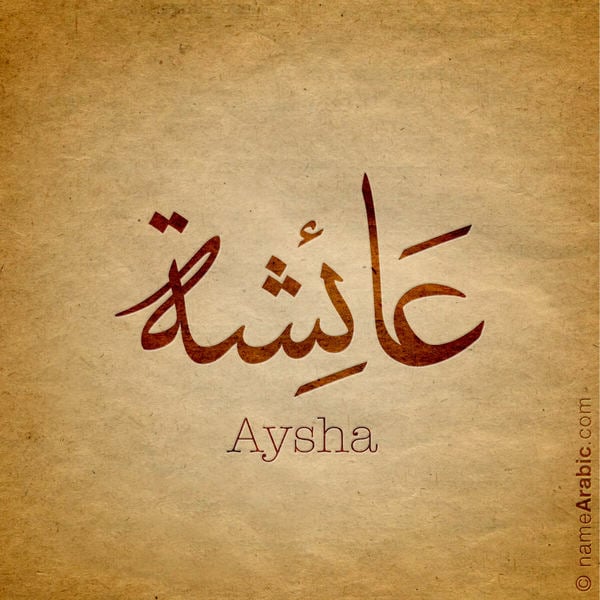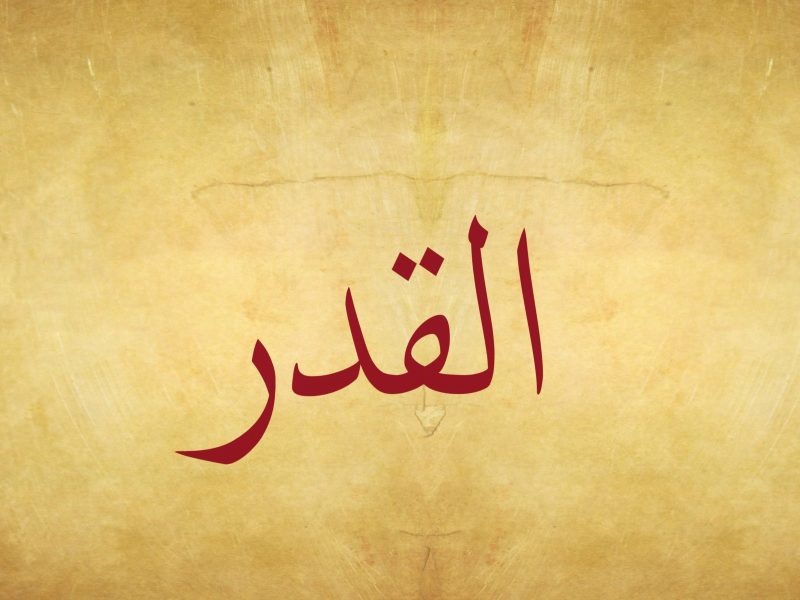Today, even though there are narrations “Aisha (ra) married Prophet Muhammad when she was six years old and she was nine when he consummated the marriage” in some of the Hadith Books (see: Bukhari, Marriage, 38,39; Muslim, Marriage, 70; Abu Dawud, Marriage, 32; Nasai, Marriage, 29; Ibn Majah, Marriage, 13), and that “Aisha was born eight years before the migration” (see Bukhari 7.18, Sahih Bukhari Volume 7, Book 62, Number 88, Sahih Bukhari 5.236), we see that these narrations were reported by Hisham ibn Urwah on the authority of his father. He is always in the narration chains. Yet, such important and well-known events should have been reported by more than one person. There are various comments of hadith scholars about the narrations by Hisham that were narrated towards the end of his life that they are not acceptable and that he suffered bad memory at his old age.
However, there is more sound evidence to prove that Aisha (ra) married Prophet Muhammad (pbuh) when she was in 18-21 age range. This evidence is based on different narrations, comparison and logical deduction which comes from the relationship between historical events and also historical sources. The evidence we mention here is presented further in this article. Aisha being between the ages of 18-21 is also in accordance with the Qur’an. The following verse which emphasizes the significance of Arabic language should be considered in this matter. The Glorified Allah commands:
“We sent every messenger in the language of his people to state clearly for them, and henceforth Allah lets astray who prefers the wrong way and admits in His way who prefers it (the right way). He is almighty and judges correctly” (Ibrahim/ Abraham 14:4)
There was a notion as “marriageable age” in the language of Arabic people. This notion expressed the children who had attained maturity besides having reached the puberty. The Glorified Allah commands:
“Test the orphans (in their abilities) until they reach marriageable age. Then if you perceive in them maturity (sound judgment), release their property to them. (An-Nisa/Women 4:6)
According to the Quran, a man has to give mehr (money or properties) to the woman he wants to marry. This was also implemented in Arabic culture. The woman also has to satisfy the conditions (reaching the age of maturity) to be able to receive this property freely, so that she would be able to marry. The Glorified Allah commands:
“Give the women [upon marriage] their gifts [mehr] graciously. If they themselves waive some of it for you, then take and consume it with pleasure and good cheer.” (An-Nisa/Women 4:4)
According to these verses, we can understand that having attained maturity is a requirement for marriage in Arabic culture. The marriage of Our Prophet with Aisha did not cause any rumors or objections in that century; so Aisha must have been at the age of maturity. Even in our age, a girl who has attained maturity can marry anyone she wants.
Now, let us note down the historical evidence mentioned above:
- According to Abdurrahman b. Ebi Zinad el-Medeni, Ibn Kathir and Ibn Hajar, Asma the elder sister of Aisha, was ten years older than Aisha. It is reported in Ibn Kathir’s Al-Bidayah wa al-Nihayah, as well as in Ibn Hajar al-Asqalani’s Taqreeb al-Tehzeeb:
“Asma died in 73 A.H. at the age of one hundred years. She was ten years older than her sister Aisha.”
According to this, Asma must be around 27-28 during the migration (al-hijrat), which makes Aisha 17-18 at the migration (in 622). It is a known fact that she started to live with Muhammad (pbuh) at least two years after the migration. Then, Aisha must be 19-20 when she started to live with Muhammad (pbuh). This is the strongest evidence.
There is other proof that Aisha was at least fifteen years old when she started to live with Prophet Muhammad (pbuh):
- Narrated Ibn `Umar: That the Prophet (pbuh) inspected him on the day of Uhud while he was fourteen years old, and the Prophet (pbuh) did not allow him to take part in the battle. He was inspected again by the Prophet (pbuh) on the day of Al- Khandaq (i.e. battle of the Trench) while he was fifteen years old, and the Prophet (pbuh) allowed him to take Part in the battle.[1] When we take into account that Aisha took part in the preparations before Badr and the war of Uhud, and we consider the duties that a woman would have to fulfill in war, it is evident that Aisha must be at least 16 years old during the Battle of Uhud, which is one year after she started to live with Muhammad (pbuh).
- According to Kitab al-Tafsir by Bukhari, Aisha herself is reported to say that she was a young girl (jariyah) when the Surah al-Qamar was sent down[2]. Variations of the narration includes the texts of the 45th and 46th verses of Surah al-Qamar. That Surah was sent down eight years before the migration. As an infant cannot be aware of such an incident, we can infer that Aisha was between the ages 6-13 during the revelation of this Surah. Taking into account that she had memorized the two verses of the surah, proximity to 13 is more logical. According to this, she must be between 14-21 when she got married to Muhammad (pbuh) (with proximity to 21 being more logical).
- Reported Imam Ahmad b. Hanbal in his Musnad: After the pass away of Khadijah bint Khuwaylid, Hawlah Bint Hakim, the wife of Uthman Ibn Maz’un, came to the Prophet and asked him: “O Prophet of Allah, would you like to get married?” The Prophet s.a.w.s asked: ‘With whom?” She answered: “Do you wish a virgin (bikr), or a woman which has been in marriage (sayyib)?’ “Who is the virgin?” asked the Prophet. “Aisha, the daughter of the dearest person to you (i.e. Abu Bakr)”
In Arabic, for a girl to be called “bikr = بكر”, she must have, in the least, reached the puberty.
-
It was also reported by Imam Ahmad that Aisha used to be engaged to Jubair Bin Mutyim who was the son of Al-Mutyim Bin Udai who was a disbeliever, before she got married to Prophet Muhammad (pbuh). Abu Bakr, father of Aisha, would not have agreed to this engagement after the start of the revelation since this family were disbelievers. This proves that Aisha was born before the start of the revelation, and that she was a girl at a marriageable age even before her marriage to Prophet Muhammad (pbuh).
For further information, you may read the following Q&A about the notion of marriageable age in the Quran:
Are Children Marriages Permitted in the Quran?
[1] Book of Military Expeditions led by the Prophet (pbuh) (Al-Maghaazi) _ Reference : Sahih al-Bukhari 4097 ; In-book reference: Book 64, Hadith 141; USC-MSA web (English) reference : Vol. 5, Book 59, Hadith 423 (deprecated numbering scheme)
[2] Narrated Yusuf bin Mahik: I was in the house of `Aisha, the mother of the Believers. She said, “This revelation: “Nay, but the Hour is their appointed time (for their full recompense); and the Hour will be more previous and most bitter.” (54.46) was revealed to Muhammad at Mecca while I was a playful young girl.”
حَدَّثَنَا إِبْرَاهِيمُ بْنُ مُوسَى، حَدَّثَنَا هِشَامُ بْنُ يُوسُفَ، أَنَّ ابْنَ جُرَيْجٍ، أَخْبَرَهُمْ قَالَ أَخْبَرَنِي يُوسُفُ بْنُ مَاهَكَ، قَالَ إِنِّي عِنْدَ عَائِشَةَ أُمِّ الْمُؤْمِنِينَ قَالَتْ لَقَدْ أُنْزِلَ عَلَى مُحَمَّدٍ صلى الله عليه وسلم بِمَكَّةَ، وَإِنِّي لَجَارِيَةٌ أَلْعَبُ {بَلِ السَّاعَةُ مَوْعِدُهُمْ وَالسَّاعَةُ أَدْهَى وَأَمَرُّ}
Sahih al-Bukhari » Book of Prophetic Commentary on the Qur’an (Tafseer of the Prophet (pbuh)) ; USC-MSA web (English) reference : Vol. 6, Book 60, Hadith 399; Arabic reference : Book 65, Hadith 4876








Add comment